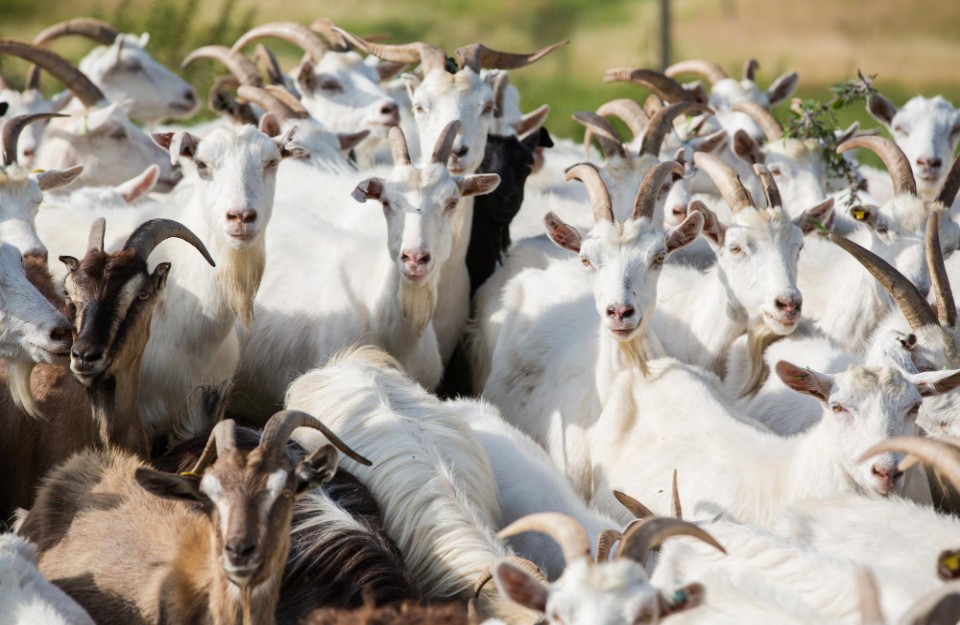
Raising goats serves as a significant source of income for impoverished laborers. Goats, being small in size, adapt well to diverse climates. In Rajasthan, goat farming has served as the cornerstone of livelihoods for generations. The country boasts 23 native and 5 foreign goat breeds. Particularly in Rajasthan, breeds such as Sirohi, Marwari, and Jakhrana are highly esteemed. The Sirohi breed, hailing from the Ajmer district, is renowned for its superior quality. With modest investments and resources, goat farming can yield substantial income to support families. Goat rearers can reap economic rewards by ensuring proper nutrition, care, breeding, and disease prevention for their goats. For instance, income can be earned through the sale of dairy goats, goat milk, by-products such as hair and skin, and the sale of manure.
Maintaining clean and comfortable housing is crucial for successful goat rearing or animal husbandry. It's imperative to provide goats with a shed or hut for their dwelling. The chosen location should steer clear of waterlogging and ideally be elevated. Each goat necessitates a space of 12-14 square feet, with the ground covered in gravel to prevent the buildup of mud. For a herd of 100 goats, a shed measuring 60x30 feet made of wood or mesh should be constructed, offering ample room for their movement.
The roof should be crafted from asbestos or thatched with eaves extending outward on all sides to prevent water seepage during rainfall and to minimize direct exposure to sunlight. Goats should have access to water through drinkers, and a water trough should be positioned outside the shed. Trees such as neem, sheesham, peepal, mango, babul, and bael should be planted around the enclosure.
Avoid housing goats on cement floors, as their urine and feces can soil the surface, heightening the risk of diseases like coccidiosis if not adequately cleaned. Soil can serve as bedding and should be replaced every 6-8 months, with the used soil utilized as manure in fields. To shield goats from the cold, spread straw bedding on the floor. Alternatively, hay can be used if straw is unavailable.
To embark on goat farming, whether on a small or large scale, one can set up a farm or enclosure at minimal costs. For those keeping goats at home, it's essential to construct a shed or hut, ensuring cleanliness and arranging for adequate feed and water. Some farmers opt to rear goats in their fields, where natural food sources are abundant, reducing the need for supplementary fodder. A minimum space of 15-20 square yards is necessary for housing 10-15 goats, providing ample room for their well-being. Proper feeding, access to fodder or feed, and disease management are crucial aspects of goat farming.
response to unemployment challenges, the Madhya Pradesh government has launched a goat farming scheme. Under this initiative, individuals can initiate their own goat farming business, potentially uplifting the economic status of impoverished laborers. The government will facilitate bank loans and offer subsidies to kickstart goat farming ventures. The scheme's objective is to promote goat farming and create employment opportunities for the state's residents. Applicants in Madhya Pradesh must possess a minimum of 10 goats and 1 male goat (buck) to qualify for participation in the goat farming scheme.
Goat farming presents numerous advantages to the goat rearer. Through the sale of meat, milk, and hides, goat rearers can secure a respectable income. Given that goats typically give birth to 2-3 kids annually, goat rearers can realize substantial profits by selling more goats. Furthermore, goat farming entails low expenses in terms of housing and upkeep. Additionally, the central government extends loans to support goat farming initiatives.
With minimal overheads, goat rearers can attain significant profits from goat farming endeavors. Goats can be sold for prices ranging approximately from 12,000 to 14,000 rupees each, enabling goat rearers to earn up to three to three and a half lakh rupees by selling 20-25 goats. Moreover, selling goat milk can yield considerable profits. Goat rearers can also capitalize on the sale of milk, hides, meat, wool, and manure. During Eid, there is heightened demand for goats, facilitating profitable sales for goat rearers.
Diseases in Goats and Prevention: